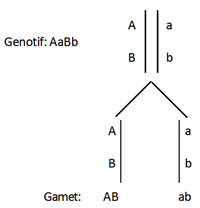Kingdom Animalia
Subkingdom Eumetazoa
Superphylum Deuterostomia
Phylum Hemichordata
Class Enteropneusta
Class Graptolithina
Class Pterobranchia
Class Planctosphaeroidea
|
The most distinguishing characteristic of the Hemichordates is a more primitive form of notochord, called a stomochord that contained a nerve system. This tube provides the basis for placing the Hemichordates as a sister group to true Chordates. They also have branchial openings, or gill slits, that open into the pharynx.
There are three classes of Hemichordates. The Enteropneusta are the acorn worms that remain extant. The Pterobranchia are also extant and form a small and obscure group that form colonies in which the individuals are interconnected by stems, or stolons made from collagen protein. Members of Class Graptolithina (the Graptolites) are common fossils with a worldwide distribution making them important as index fossils, particularly for dating Palaeozoic sediments. Graptolite fossils were once colony of tiny animals that either floated in the sea or was attached to the sea floor like a crinoid. The graptolite colony consisted of one or many branches that were straight, curved or spiral. The individual animals lived within structures along the length of a community exoskeleton formed from collagen. Graptolite fossils appear from the Cambrian and dissapear in the Carboniferous. Yannanozoon lividum from the early Cambrian Chengjiang Biota is a putative, primitive hemichordate, though some scientists have assigned it to the enigmatic phylum Vetulicolia.
The most prevalent Hemichordate fossils are the Graptolites which were colonial animals that are primarily known from the upper Cambrian through the Lower Carboniferous (Mississippian) of the Paleozoic. A graptolite colony is called a rhabdosome and will have a varying number of branches called stipes that come from the initial animal individual called a sicula. Each subsequent individual (zooid) was housed within a tubular or cup-like structure (called a theca).
|
Yannanozoon
lividum
Early Cambrian Chengjiang, China |
Spirograptus
turriculatus Graptolite
Silurian New South Wales, Australia |
Phyllograptus
archaios Graptolites
Ordovician Fillmore Formation, Utah |
Phyllograptus
typus Graptolite
Ordovician Victoria, Australia |
Phyylograptus
fructicosus Graptolite
Ordovician Victoria, Australia |
Sphenoecium
discoidalis Graptolite
Cambrian Christmas Hills, Australia |
Aspidograptus
smithonensis Graptolite
cambrian Tasmania, Australia |
Thank you for your NICE attention.. ..Jangan lupa follow and like blog saya..


5 komentar:
bear grylls messer
My web site - bear grylls messer
bear grylls messer
Here is my weblog bear grylls messer
bear grylls messer
My web blog : bear grylls messer
Brokersring.com - Learn how to turn $500 into $5,000 in a month!
[url=http://www.brokersring.com/]Make Money Online[/url] - The Secret Reveled with Binary Option
Binary Options is the way to [url=http://www.brokersring.com/]make money[/url] securely online
Turn $200 into $5,000 Every Month - Secret Reveled!
Learn this simple way to make an extra income from home.
www.youtube.com/watch?v=1VyiMfqQST8
Posting Komentar